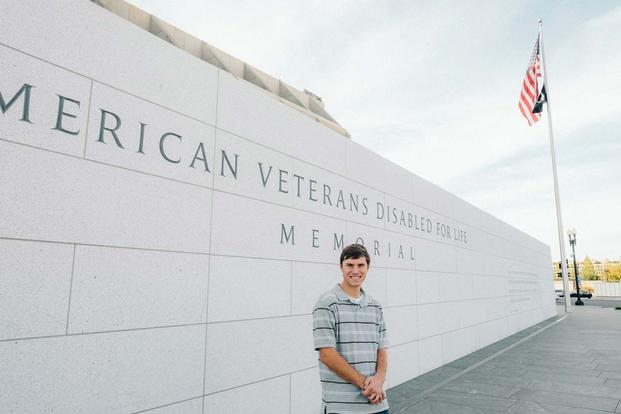On his first reconnaissance mission in Afghanistan outside the wire, Marine Lance Cpl. Jeffrey Cole was on the way back to his forward operating base when he began taking rapid enemy gunfire.
Cole and a few others from his unit, Echo company, 2nd Battalion, 9th Marines, were hit. During his first treatment in theater, the machine gunner learned what no one wants to hear: the bullets had blown away parts of his bicep and tricep in his left arm, completely severing his ulnar nerve.
"I had a lot of trauma to the arm," Cole recently told Military.com, reflecting back on his experience. He had deployed to Marjah, Afghanistan, during a major 10-month offensive on the Taliban stronghold in 2010, and served in the Marine Corps only a little over a year when he was wounded.
Cole received the Silver Star for his actions that day in holding back the enemy by returning fire with a fellow Marine's M240B medium machine gun -- all while using his mangled arm -- as five wounded squad mates were moved to safety. The Corps released a photo in 2012 showing a valiant Cole during the firefight.
What Cole didn't guess was that eight days after the ambush, he would be one of the first patients in the world to receive one of the longest available nerve grafts -- 70 millimeters, or nearly three inches, grown from cadaver tissue -- to repair his arm.
Still, doctors knew it's what Cole would need if he were to regain any kind of movement.
Back in the U.S., physicians told him, "'Well, you either try this, or we might have to amputate your arm,'" Cole said. "So of course I said 'yes.'"
Cole received the surgery at Walter Reed National Military Medical Center in Bethesda, Maryland.
Now, he's talking about his experience in hopes that others might consider nerve graft repair if presented with the chance.
"I can't change the past … all you can do is take the best of every day," he said. "And I'm happy with the results of this."
Cole was the first upper extremity surgery of this kind, said Dr. Ian Valerio, who performed the surgery at the time. Doctors had performed several similar surgeries in the past but only using 30 mm or 50 mm grafts.
Valerio used an Avance graft, or processed human tissue -- a nerve allograft to act as a conduit for the injured nerve -- that can repair severed nerves as it revascularizes and eventually becomes a part of the patient's own tissue, according to its maker, AxoGen. "It is essentially a 3-D scaffold used to bridge a nerve gap due to injury," according to the company's description of the product provided to Military.com.
"By month 14, I had actually seen a real difference," Cole said during a phone interview.
Valerio said nerves regrow on average 1 mm a day. Valerio also used a natural surgical implant, dubbed AxoGuard, on both ends of the graft used to protect injured nerves and help reinforce the nerve as it healed.
"That helps take tension off the repair," Valerio, a former Navy surgeon, told Military.com. "Because nerve regeneration happens much better if there's tension off the nerve."
In order to get feeling back in Cole's arm, once implanted, the nerve graft needed to regenerate and sprout through his muscles from his bicep down through his hand.
After the surgery, Cole endured physical and occupational therapy for two years -- six to eight hours a day -- with some done at Walter Reed and some near his duty station at Camp Lejeune, North Carolina. Now 26, he medically retired from the Marine Corps as a corporal in 2013.
Aside from some loss of dexterity strength, "I can do almost anything a regular person would be able to do," he said. He went from "no feeling, no movement" from his shoulder down -- "it just hung there. But now it's a complete 180 from where I started," he said.
Cole is grateful to have full use and feeling in his arm.
"I wish I could have stayed longer, and done a lot more during my time in the Marines," he said. Even so, he views what happened to him in a positive light. He now lives in the Washington, D.C., area and works as a park ranger, giving tours on the nation's monuments.
There have been several hundred of this kind of surgery since Cole's procedure, Valerio said. Looking to the future, doctors are now looking to advance these allograft tissues to regenerate more quickly.
"As we understand nerve repair more and more," Valerio said, it's very promising."
-- Oriana Pawlyk can be reached at oriana.pawlyk@military.com. Follow her on Twitter at @Oriana0214.































